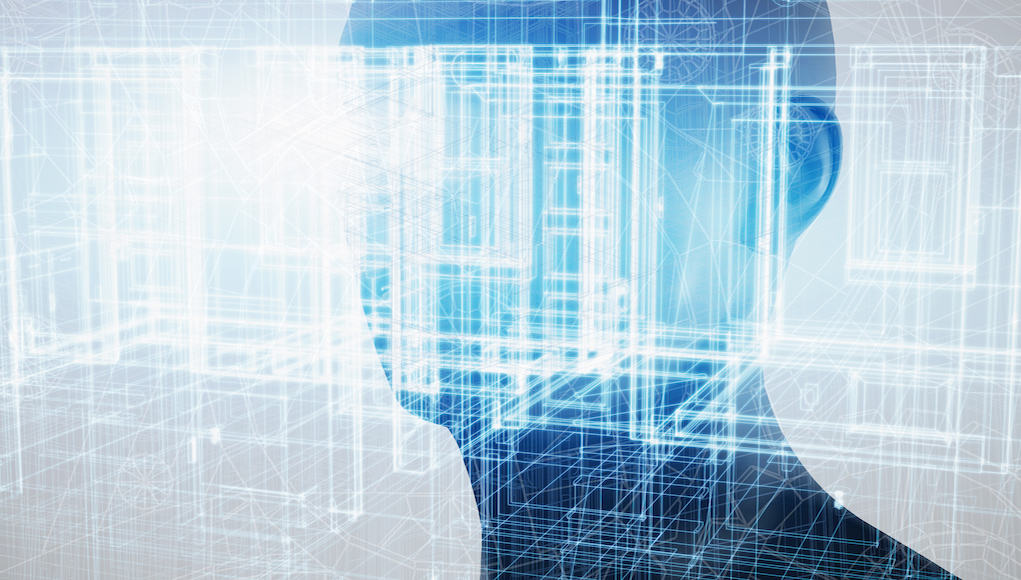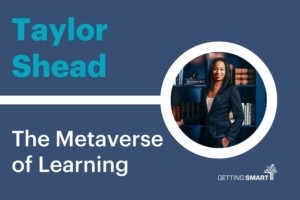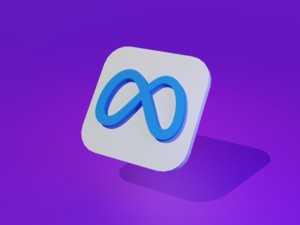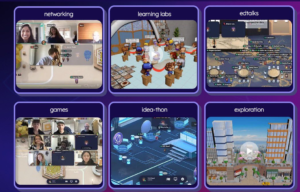What Web3 Means for the Future of Education
Key Points
-
Web3 is the third iteration of what we know as the internet.
-
Simply put, it is the next phase of what we can already do on the internet.
-
As educators, we have to help to prepare our students for how these changes may impact their future learning or future careers.

Introduction: What is Web3?
A recent Jobs of Tomorrow report stated that there will be an influx of jobs in the areas of artificial intelligence, data analytics and cloud computing. And now, just as we are becoming used to hearing about NFTs, the blockchain, and the metaverse, another term enters the conversation: Web3. You may be wondering what it is.
Well, Web3 is the third iteration of what we know as the internet. Does that mean it’s an improved internet? What difference does this new version make? Simply put, it is the next phase of what we can already do on the internet. As with all technologies, cell phones, Windows and Mac operating systems, there are always new versions and updates to those versions based on emerging technologies and increased functionalities. It is not any different when it comes to the web. I showed my students an overview video that helps to explain Web3 and one that shows differences between the web versions.
When it started, Web 1.0 simply enabled the user to go to a web page and interact with a static page. It was simply the ability to read and download content. Web 2.0 provided interactivity and the ability to connect globally. It was more “read and write.” In Web 2.0, a lot of things can take place online and we facilitate communication, transactions and so much more. Think social media, online banking, pursuing education degrees, trip planning, and more. Of course, there are big companies that have a role in how this is possible think Apple, Google, Amazon, and Facebook even, especially in the past 9 months. Add into that all of the social media platforms and web conferencing platforms, and we have a tremendous amount of interactivity in the virtual space. However, this occurs in a centralized space under the watch of government regulation.
Now enter Web3, which is proposed to be essentially a decentralized space that is available on the blockchain. Unlike in Web 2.0 where websites and activities on social media are monitored, and have a centralized location or person responsible for them, Web3 will be decentralized and create even more interactivity and possibilities, in particular in the metaverse. One example, Facebook is making the shift from Web 2.0 to Web3 and making the transition to “read, write, own” rather than just “read and write.”
What’s so great about Web3?
What about security on Web3? Web3 uses cryptography and encrypted communication. An example would be a platform like WhatsApp which has encrypted communication and enables you to maintain privacy.
What about decentralization? Decentralized means that any person can be the provider of a service. You don’t need to use one of the companies that are already out there like messaging apps or Facebook for example. In Web3 the focus is on more freedom to create and interact, have business transactions, engage in communication with others without the centralized control of a single service provider. It relies on many users rather than the power over the internet is limited to a few. For those who used Second Life, a metaverse, it was a centralized space on Web2.
As educators, we have to help to prepare our students for how these changes may impact their future learning or future careers.
Rachelle Dené Poth
Decentraland like Open Source and Sandbox are virtual worlds in web3 where people can buy real estate, have businesses, entertain, play games and more. Snoop Dogg bought real estate in Sandbox, called the “Snoopverse” and sold a parcel of land next to his which someone paid $450,000 for.
It can be troubling to think about a decentralized network, however people who stand behind it and are doing the work believe that it will be a more democratic version of what the current internet already provides. Since it won’t be overseen by companies like Amazon or Microsoft, people will have more voice and choice in what they are participating in, creating and the information they are sharing.
There is a lot to understand about Web3 and these emerging technologies. Part of it requires people to understand what blockchain is because it is a ledger of activity that occurs. Some say that Web2 is based on a “trustless model” because we have to rely on and put our trust in different companies providing their services online whereas in Web3, which is decentralized because they’re built on a blockchain, you don’t have to rely on the specific provider. Instead, we’re relying on the algorithms and programming that is happening behind it.
With the recent acquisition of Twitter by Elon Musk, many are wondering what effect that will have. Right now, posts made on Twitter cannot be edited and they can be taken down or flagged. However, with Web3, Twitter users would have more control over posts and it would be more difficult for people to hack accounts or create a duplicate Twitter account as somebody else’s identity because of the verification process involved.
What does this mean for education?
Well, many of the edtech companies that we rely on, who may not be able to have their content available because of being overseen in the “centralized” space, could provide different content. It could be through offering courses or credentialing through Web3. By using blockchain, people will be able to track their credentials which would make it more difficult for their information to be duplicated or faked. It’s also possible for micro-credentialing that is issued by universities or the use of NFTs.
Also with the metaverse or eduverse, teachers can be in physical classrooms and have a digital twin, an avatar that can go into digital spaces. Depending on the location of schools, course offerings and the financial needs of students, there are benefits to these options. Some of my students would still prefer to be in the physical classroom but do acknowledge the benefits of being able to learn from anywhere and the potential savings of funding and even the impact on the environment which has become part of the conversation as well. The cost of higher education can be prohibitive and therefore a metaverse experience could facilitate more opportunities.
There are 10 metaversities planned to open in the fall. A new Web3 platform “Proof of Learn” is looking to make high-tech quality education accessible to students from around the world through the use of blockchain. Students will learn in the metaverse, have NFT credentials and receive rewards through cryptocurrency through this platform. According to them, their vision is that anyone who can connect on the internet can gain and have access to online education.
Where do we go from here?
We take time to explore the resources that are out there and better understand the terms and emerging technologies that are becoming part of our digital lives. On Tuesday nights, I’ve been joining in the NFT Twitter Spaces held by Rabbi Michael Cohen. He has a great discussion each week focused on NFTs, the metaverse and Web3 with guest speakers.
As educators, we have to help to prepare our students for how these changes may impact their future learning or future careers. Starting with a base understanding and then engaging students in conversations and joining different networks of educators and tech developers will help us to provide more for students and for ourselves.








0 Comments
Leave a Comment
Your email address will not be published. All fields are required.